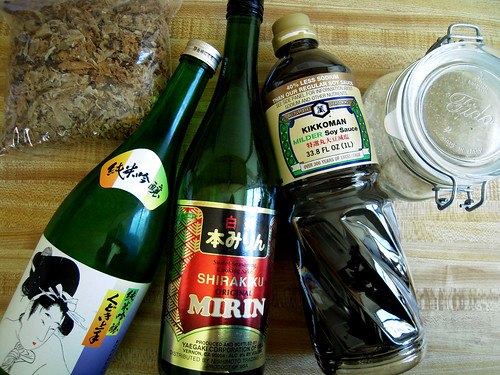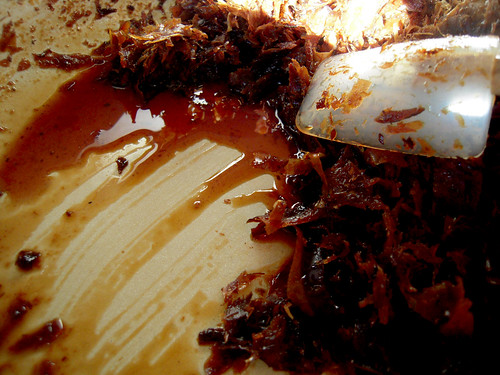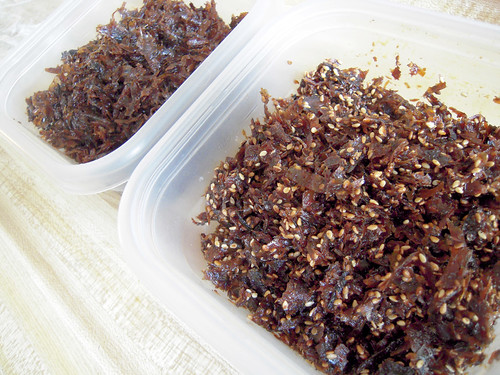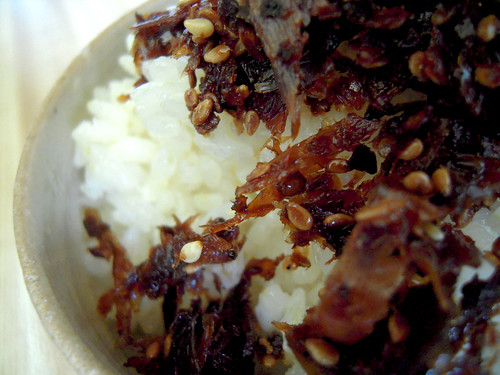Japanify: Tsukudani (Condiment Crack)

Mottainai is said in Japan when something perfectly usable is abandoned or sent to the trashcan. In the past ten years, Japan has seen a trend in awareness regarding waste and reusing whenever possible. It's ironic that this has become a trend because the idea of reuse goes way back and is intrinsic to Japanese cooking, for example using ALL parts of chicken for yakitori and niban-dashi (drawing out stock from a source for the second time).
Mottainai is uttered in situations when one might see half a plateful of tortilla chips thrown away because there was too much served in the first place--or when you badly stain a piece of clothing and have to give up on it. "What a waste! Mottainai!"
The Japanese have gladly embraced capitalism, disposable goods and plastic packaging. When coupled with the country's obsession of perfect and excessive wrapping (stemming from the furoshiki tradition), disposable waste has led the Japanese to perfect the process of incinerating products deemed combustible (moeru-gomi). Part of this process is categorizing trash into such minute detail, that one needs to study and memorize a chart before disposing their trash properly.
Why all this talk about mottainai? That's because this weeks' recipe is so anti-mottainai. No waste on Japanify!
Tsukudani is a rice condiment that is made by simmering "once-used" food products (most often left behind from the dashi-making process) in a mixture of soy sauce, mirin, sake and sugar. The advantage of tsukudani is that it keeps very well, made very easily and quickly flavors a simple bowl of rice.
INGREDIENTS
200g (approx. 3 cups) fish shavings that have been used for extracting dashi (dried bonito or other fish flakes) or once-used kombu, brought back to room temperature. I used sanma shavings here.
8 tbsp shoyu (soy sauce)
4 tbsp mirin
4 tbsp sake
2 tbsp sugar

METHOD
1. If possible, use a cast iron pot like a Le Creuset to avoid burning. Put fish shavings in the pot.
2. Mix together all the liquids and sugar in a bowl until the sugar dissolves.
3. Dump the liquid mixture into the pot.

4. Keep over medium or medium-low, uncovered, for 40-60 minutes or until the liquid feels and looks syrupy when you rake a spatula across the bottom of the pot.

5. Taste the tsukudani and add mirin or soy sauce if it's lacking sweetness or saltiness, respectively.

I made two types 1) plain and 2) with roasted sesame seeds mixed in, for a variation in flavor and texture.

Knowing that my breakfast comes from a tradition of reuse is what gets me up and ready for a totally un-mottainai day.


For folks who have never tried tsukudani, I recommend that you try the store-bought version (in the refrigerated section of any Japanese market) before making it at home. As with any kind of food, it's better to know what you are striving for before you embark on a new cooking adventure.
*Every Thursday, Japanify aims to make Japanese cooking at home easy, accessible and affordable. For questions, please email Yoko directly at yoko@umamimart.com or simply comment below!
